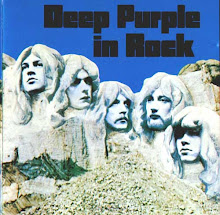I think I may somehow have omitted this point from my classic summary of What makes a GREAT bar? but it is an important one: unity of space.
I do not like bars that are divided up into discrete areas. I fear one of the biggest shortcomings of my demised favourite bar, Room 101, was that it had a spacious - and utterly irrelevant - upstairs room (complete with its own bar!), which they could rarely persuade anyone to use. I fear that one of the reasons why its replacement on the same site is doomed to similar failure is that the owners are planning to turn the upstairs into a restaurant while downstairs trying to retain 101's niche as a 'happy hour' drinking destination and weekend live music haunt. (It seems to me that that is a very uncomfortable marriage. Diners upstairs are likely to be put off by any rowdiness downstairs, by merely having to enter the premises through a bar which appears to have no strong connection to the restaurant above. Drinkers and music fans are likely to be put off by the swisher clientele having a drink downstairs before going up for a meal. Unless Yann & co. can accomplish some very canny branding with this new venture, I feel that either the bar must prevail and the restaurant fail, or vice versa. Well, no, in fact I would bet that, in that location, both will inevitably fail. Sorry, boys; I love you dearly, but I think it's a hopeless cause.)
My best beloved of Beijing drinking holes, the Pool Bar, is mildly stigmatized by division also. It gets away with it because its upstairs area (which I have scarcely ever used) forms an open mezzanine balcony, and everywhere up there - with the one exception of the snug little lounge directly above the bar - affords a clear view of the pool-playing area down below (and vice versa).
Most British bars, of course, are divided - or they used to be so, until the wave of modernization began sweeping through 15 or so years ago. This may be part of the reason why I hate the idea so much. It was a fatuous outgrowth of Britain's objectionable class consciousness that almost all of the country's pubs kept two distinct bars - the public bar and the saloon bar. The public bar was dark, characterful, and always smelt slightly of cigarette smoke and spilt beer and damp dogs. It had a wood or tiled floor. And, in the bad old days, it was for men only (there are still a few places in the less enlightened corners of the country where this custom prevails: it was still relatively common in the north-east when I was a student.... although that is some time ago now). The saloon bar was always lighter, more antiseptic. There would be carpet on the floor. You could take women and children in there. And you'd usually have to pay a slightly higher tariff on everything for the privilege (a policy calculated to discourage the riff-raff from straying out of the public bar, of course; but I have always been content to be numbered amongst the riff-raff - and I hate paying extra for anything!).
Of course, when I was going into pubs as a kid with my father, it was almost always the saloon bars that we would use. I hated them. No atmosphere, no mystique: it was just like being in your living-room at home, only with a half of shandy and a packet of peanuts. When, just occasionally, my father would take me into a public bar, I realised that this was a whole different world, this was the seedy glamour that conformed to some obscure inborn notion - my 'Platonic ideal' - of what a bar should be.
Over the years of my adolescence, as I started going to pubs more and more, and often unaccompanied by my parents, it began to dawn on me slowly, almost imperceptibly, that the pubs I liked best were distinguished by having tiny saloon bars that were almost invariably empty. A pub with a big saloon bar and a tiny public bar was much less enticing. A pub with no saloon bar at all was the nirvana I was searching for. The Traveller's Rest in Durham was one such; The Black Swan in Oxford another.
And then..... when I first started making regular trips to the States in the mid-90s, I discovered that the unitary bar is pretty much the standard template over there; and many, many of my favourite bars over the years have been American ones.
I think it all comes down to character: as I did say in the What makes a GREAT bar? post, a great bar needs a distinctive personality; it does not need a split personality - but that will almost always ensue if it has separate rooms.
One bar, good; more than one bar, bad.
Easy enough to remember, bar owners? Oh, I hope so.






No comments:
Post a Comment